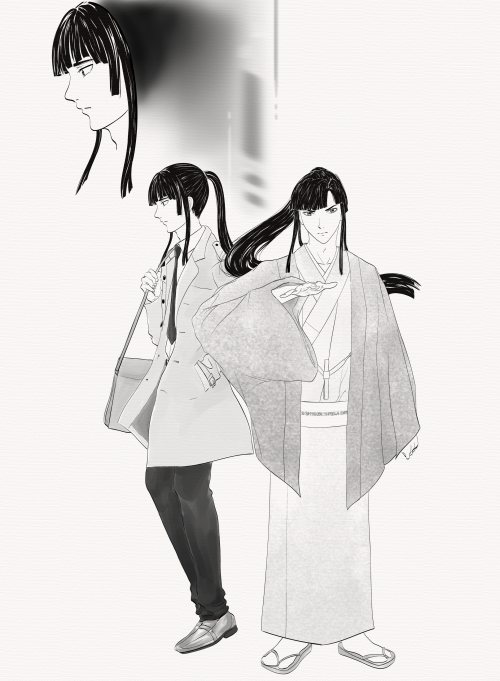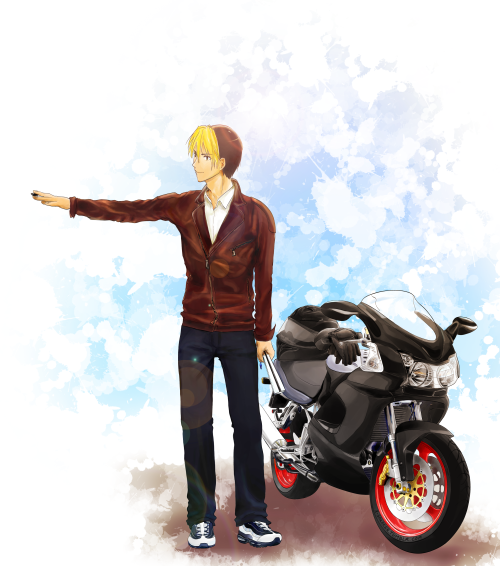#hikaru and his crazy shoes
Akihika Reboot: A Preface
Recently I’ve started reading the Hikago manga for the first time, after rewatching the anime series 13 years after it’s been released. It’s been quite an interesting journey watching it with a new perspective on a personal level because of who I am now versus then. The first time I saw this series was when it came out in 2003; back then I was just about the same age as these two, I haven’t lost anyone yet, and had only just come to terms with discovering certain things about my own sexual orientation. Thirteen years later, things have changed, more than a few people are gone from my life, and - being a member of the queer community - I have learned a bit more about sexuality and its place in society through personal research and formal education.
Now, in regards to the reading, this series highlight one of the reasons why I chose to learn Japanese. Being able to read the work in its original language allows me to find clues (much like easter eggs) that would otherwise be lost in translation. The Japanese language is interesting in the regard that it mainly uses two systems of scripture in writing: Kana and Kanji. The way that these two systems are used interchangeably (and in the case of Hikago, deliberately so) and the various word choices used switching from the more simplistic Kana to a more meaningful Kanji character, give me hints as to the intention of the author as well as the social constraints she was working under for the Shonen Jump magazine, in the 90s-00s era. It makes me ponder the meaning of certain dialogue, especially as I question that meaning in the context of the relationship between the two main characters.
Ultimately what I have been trying to do, as I read on, is to attempt a reevaluation of the true nature of these two’s relationship, as well as the intentions of the author, under a new set of rules that I apply to myself as a reader coming from the queer community. What bugs me is that, among the search results for this tag, I see a lot of posts where people either say they’ll ship Akihika regardless of what canon is, or they write long essays trying to argue why this ship deserves to exist, or why it trumps the Hikaru x Akari ship, or otherwise try to justify the ship. The reason why this bugs me is that, all of these posts operate under the assumption that the readers need to fight and justify a queer interpretation of the relationship, and not the other way around. There is an inherent assumption, even among queer readers, that for some reason we are supposed to assume all characters are straight unless otherwise noted. This is heteronormativity at its finest here. It is so ingrained into our thinking that we don’t stop and think, “wait, was it ever explicitly stated in canon that these guys must be straight?”
And that is where the brilliance of Hotta-sensei as a writer shines to me. Just think about it for a moment: this is a Shonen Jump manga. If she wanted to insert your average heterosexual romantic subplot on the side, she could easily have done so. And yet she remains (almost adamantly so) deliberately silent about the sexual orientation of her characters, or at least of Hikaru and Akira. What is it about this story being published in Shonen Jump that we suddenly have to assume the protagonist must be straight? What is it about the story being written for a young teenage (male) target audience that we are supposed to take interactions between Hikaru and Akari as “canon” evidence of a straight, mutual romance, but then dismiss all those moments Hikaru and Akira are obsessed with each other as simply “platonic rivalry”? How about no? How about the burden of proof actually lies on people who claim that Hikaru x Akari is canon, who reject - with almost homophobic conviction - the notion that Hikaru and Akira’s romantic involvement is canon? To rhetorically answer the question “can’t you just accept what they have between them is platonic without having drag romance into this?” I say, “what is it about the notion that two boys can be in love with each other are you so afraid of entertaining, when if one of them had been a girl you’d jump on the idea and not even bat an eye? And what is with this assumption that there can’t be platonic friendship between a boy (Hikaru) and a girl (Akari)?” (Which, by the way, is quite common between a gay boy and a girl)
Now, of course, someone may say, “but there is no explicit text on a romantic plot line, you can’t say that it’s ‘canon’ because of that.” But here is where being able to read Japanese provides a key to a new, a more proper, understanding of this work. Forget the subtext, guys, there is plenty in the main text (in Japanese, anyway), that is direct evidence for Akihika. The evidence may be scattered in pieces across the writing, but it is there. Sure, Hikago isn’t a love story in the traditional sense (actually it is an EPIC love story, but people who refuse to see it will never understand that); it’s a coming-of-age story. It is a story about a boy discovering something that he will love to do for the rest of his life, despite the loss and obstacles he faces, and finding his lifelong partner to do it with along the way. Hm… Finding your lifelong partner… I believe that’s what people call marriage…?
So without further ado, I will now introduce my reboot of this series/ship, based on my interpretation of where the canon text was heading, under my own set of rules. My rules are simple: throw away my own bias, throw away heteronormative assumptions about the canon text, and read without assuming anything of their sexual orientation. As we all know, the canon story was terminated prematurely due to some legal troubles, leaving a gaping hole to be filled at the end (I suspect we only got through act 1 with the disappearance of Sai; I’m sure Hotta-sensei actually finished writing the whole story but never got to publish it). My “reboot” will take place in today’s society, in year 2016 (13 years post-canon), and I will deploy all the social connotations I have free rein thereof (which means, yes, gay marriage is possible). I suppose it is a headcanon of sorts, a way for myself to find closure for these two. I have written an essay to further explain my motivation behind compiling this reboot series after my deeper reading of the manga, and to respond to an awesome essay by Stirring Still; this will be linked below as well. The reboot will mostly include chapters or drabble I’ve written, though there is one doujin I accepted as part of this universe. At this point, they are both 28. Touya has three titles: Meijin, Ouza, and Jyudan, while Shindou has one: Honinbou. Their personalities have grown over time - Touya is a little softer and easier with his smiles in front of Shindou, while loss has taught Shindou to have patience for his loved ones. In essence, they’ve returned to behaving closer to the way they were when they first met. They still bicker though; that never changes.
Chapters (listed in order published, numbered in story arc timeline):
5|6*|4|1|7|5.5|8|2|3|8.5*|8.6*|0/11|12|9|10*
Special:0/11
Drabbles:[DR1] [x]
Doodles:[D1]
Essay: Coming Soon
*NSFW, proceed AYOR
A note about the cover art: trying new things and painting with different colors. Inspired by style in original manga and art book, of course. Akira with normal volume hair and extra Lacus Clyne-style hair… just for kicks. A photo ref was used for the bikeand helmet.There is absolutely no reason why Akira’s art is B/W and Hikaru’s is colored, except that is just how it appears in my mind.
Post link


